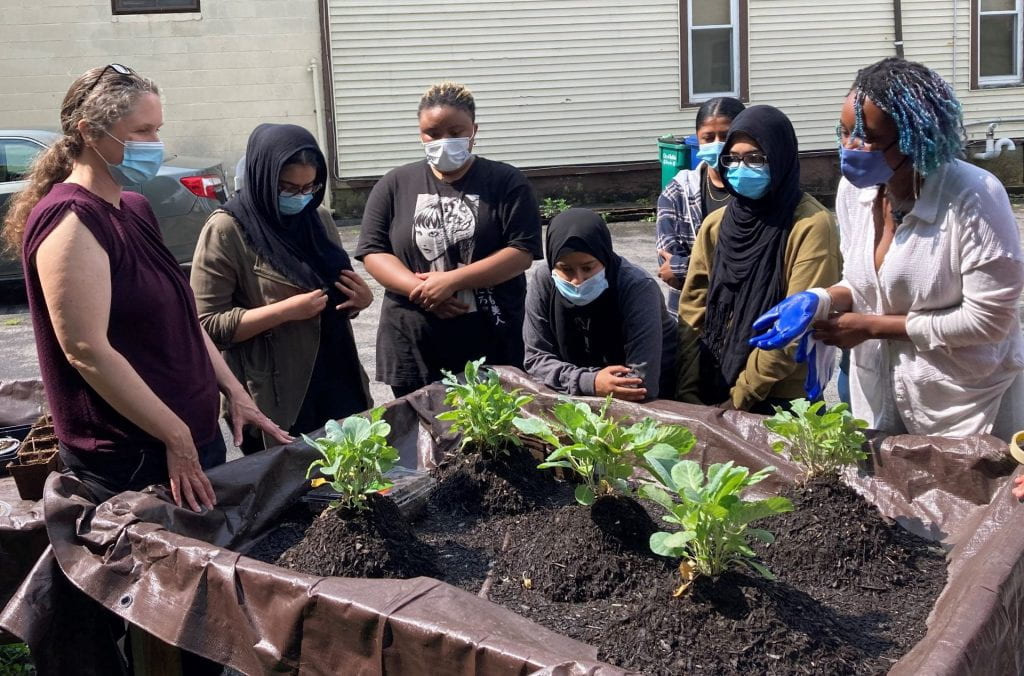Home | Unit 1 | Unit 2 | Unit 3 | Unit 4
 Activities
Activities
- 3.1 Complexities of Strength
- 3.2 Where Do You Land?
- 3.3 Journeying Through Our Food System
- 3.4 Food System Influences
- 3.5 What is Justice?
- 3.6 Let’s Talk about Food Justice
- 3.7 Planting the Garden
In addition to activities:
- Voices in Food Justice Spotlights:
Aparna Pallavi- What Foods Did Your Ancestors Love?
Green Bronx Machine on Real Food Media - Food for Thought
- Project SOW Learning Standards
- Youth Action Project
Download S.O.W. Curriculum Print Friendly PDF here
Introduction
In Unit Three: Sowing Seeds of Curiosity, we map out the food system and begin to understand how it impacts us and our spaces. We define terms important to food justice and reflect upon how we can focus on our strengths to take action. We plant the garden.
As we begin to discuss the food system and food justice, we ground ourselves in our individual strengths and what we already know about these topics. As beings who eat food, we all participate in the food system and have varying degrees of familiarity with its parts and influences. To begin understanding its complexity, we break the food system into six main parts-growing, processing, distributing, accessing, eating, and disposing. We explore each part by mapping a snack’s journey from field to fork to disposal.
Youth are encouraged to reflect upon where they see themselves in the food system and how the food system affects people. The struggle for all people to have access to healthy, affordable, and culturally appropriate food is complex. Developing common language around food justice helps to articulate tough issues and inspire solutions.
In planting and caring for the garden, youth discover the power of growing one’s own food to provide families and communities with healthy, accessible, affordable food. In a world troubled by food insecurity and a changing climate, youth gardeners experience firsthand the resilience, confidence, and connection that this time-honored practice brings.
We encourage the facilitator to read over the unit and curriculum in its entirety before use, since many activities are complementary. This curriculum may at times lead to uncomfortable conversations. It is important to remember as the facilitator, it is okay to experience discomfort, and it is also okay if you do not have all of the answers; in addition, we may not find the answers. When you start to feel uncomfortable, we invite you to pause, slow down, wonder into the nature of the discomfort, and allow some “room” for it. You may not always need to speak or intervene. In fact, allowing for some space in which to reflect is an important part of engaging with justice.
Target Objectives
- Collaborate to identify the steps a common snack food takes from field to fork.
- Explore what one’s role in the food system can be.
- Develop a collective understanding of what justice is and commonly used food justice terms.
- Reflect upon how the food system affects people.
- Understand one’s strengths and perceived weaknesses are related.
- Plant the garden and develop understanding of plant needs and care.


